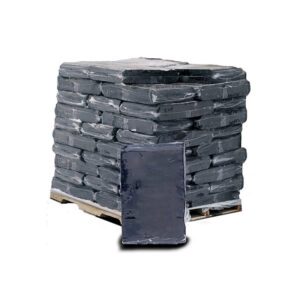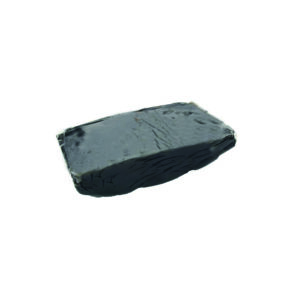Bitumen is a naturally occurring substance that, once refined, sees a lot of use in construction. Its resilience and waterproof nature means that it is most commonly used to help pave roads, but it’s also present on many roofs in many different ways.
Oxidised bitumen slabs are slabs of bitumen that have been refined with an air gun process. This refining process means they are ideal for application to currently existing substrates, like roofing felt or flashing tape, to either reinforce existing bitumen or to adhere it to a surface. This article will explain how to use them for the pour and roll method of applying roofing felt to a flat roof.
Note that this process requires the slabs to be heated first. Hot bitumen is extremely dangerous. You should always wear all appropriate safety gear when working with oxidised bitumen slabs. If any amount of bitumen comes into contact with your skin, do not touch the affected area but instead immediately immerse it in cold water.
You will also need to be extremely confident on a ladder and a roof. This is a very difficult process where you will be carrying around buckets of molten bitumen up a ladder. If you aren’t both experienced and able when it comes to working at heights it might very well be a better strategy to get professionals in to accomplish this task.
You will need:
- Safety goggles, heavy-duty safety gloves, and heavy-duty face and body protection
- A portable bitumen boiler pot
- An industrial-strength ladle
- An industrial-strength bucket with handle
- A roofing ladder
- Roofing Felt, enough to cover the entire area
- Utility knife
- Tape Measure
Application Process
First, don your safety gear. First, you should cut the roofing felt with the utility knife so that it is in strips. If you can’t get strips long enough to cover the length of the flat roof in one go, make sure you can do it in as few as possible. Whenever there are overlaps, make sure to overlap by at least 30mm. You should take the felt up to the roof first to minimise the necessary trips.
Then you should start up the portable heating vat. You will want to get the temperature to between 90 and 100 degrees for it to soften slabs. Then introduce the slab into the heating vat.
After the slab has melted, use the ladle to pour it – very carefully – into the bucket. Now carry this bucket – very carefully – up the ladder. Now you can begin pouring it on the flat roof. Pour it in a straight line starting at one of the lengthways edges. Then apply the roll of roofing felt over it. First roll it out, then make sure to smooth it out from the centre to eliminate bubbling. Continue this process, making sure to edge 30mm over with the bitumen every time you add a new layer in order to adhere the entire overlap. Return back down whenever you need to heat more bitumen.
Now you can just wait for the bitumen to dry and your new pour and roll roof will be complete.







